Root Awakening: Butterfly Pea plant has nutrient deficiency
Sign up now: Get ST's newsletters delivered to your inbox
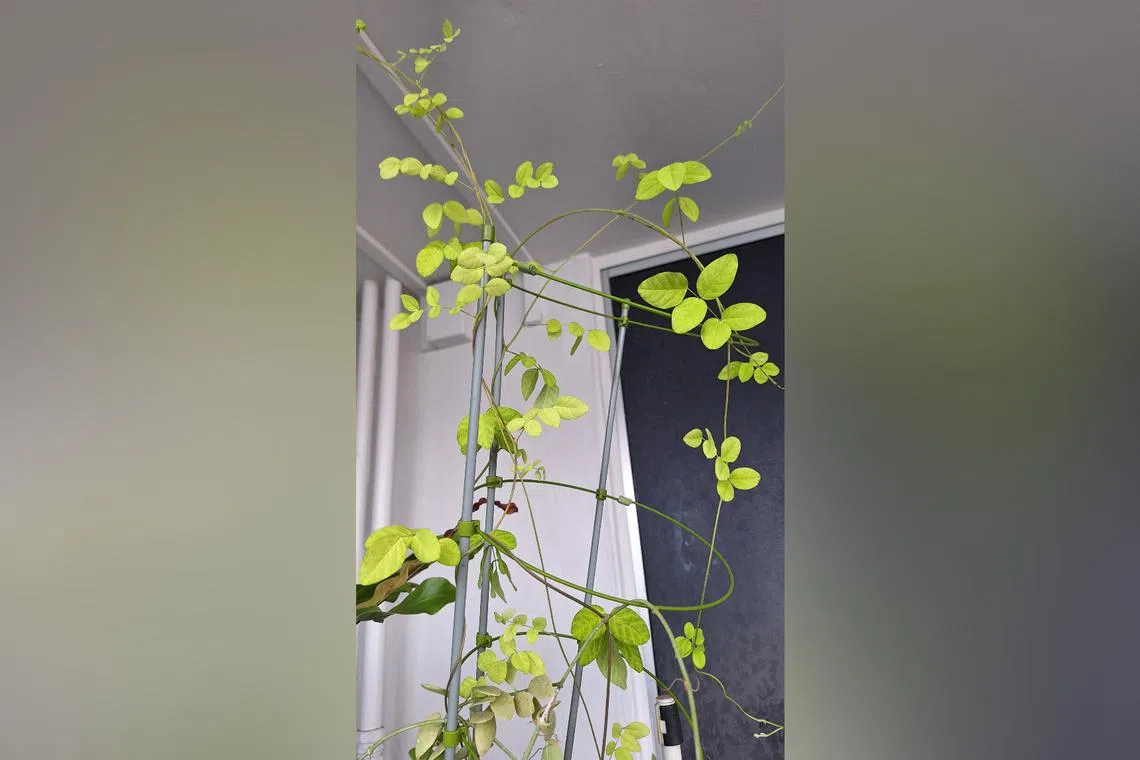
The colour of this Butterfly Pea may be due to issues with the fertiliser or growing mix.
PHOTO: SINDY ANG
Wilson Wong
Follow topic:
Check soil and fertilise plant
The leaves of my Butterfly Pea plant have yellowish-green streaks. I water it daily and feed it seaweed fertiliser monthly. What is wrong with it?
Sindy Ang
Your Butterfly Pea (Clitoria ternatea) looks to be lacking in nutrients, most likely nitrogen. Most seaweed fertilisers do not contain enough of the major nutrients that plants need for optimal growth, and they need to be supplemented via other sources.
Try a chemical fertiliser – these are available at most nurseries – and check the nutritional analysis on the label.
Alternatively, the problem may be with the soil. A growing mix rich in organic matter may retain too much moisture, resulting in wet feet and issues with nutrient intake. Such mixes, especially those consisting of coconut peat, may continue to break down and use up nutrients in the process, rendering them unavailable to your plant.
Finally, carefully remove your plant from its pot and check for any pest infestation of the roots. Soil mealybugs, a common pest that appears as a white cotton-like mass around the roots, can affect nutrient intake. Drenching or soaking the growing mix with a chemical pesticide may be the only effective solution.
Keep foliage plants in semi-shaded location
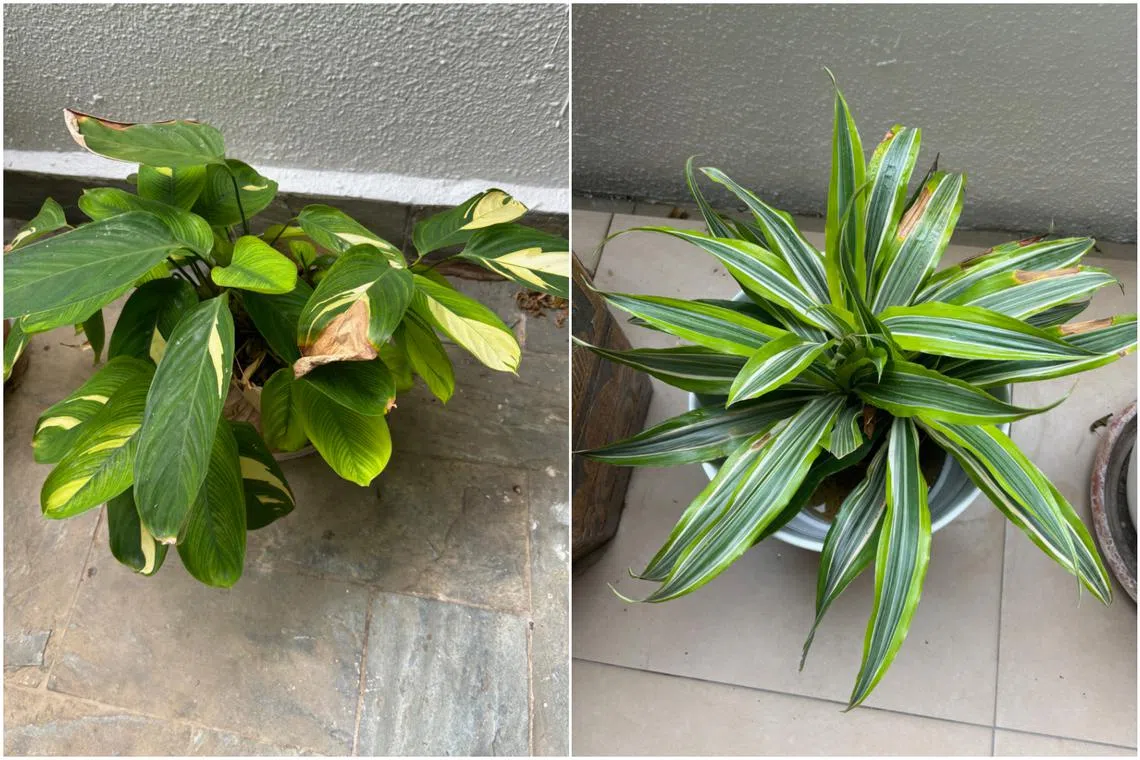
Bamburanta (Ctenanthe lubbersiana, left) and Striped Dracacena (Dracaena fragrans (Deremensis Group)) are foliage plants that should be grown in a spot that gets about four to six hours of filtered sunlight a day.
PHOTO: ANAND DANANI
My potted plants have enough sun and water, but have brown patches. How can I keep the leaves green?
Anand Danani
The plant with oval leaves is commonly known as Bamburanta (Ctenanthe lubbersiana), while the one with lance-shaped leaves is the Striped Dracacena (Dracaena fragrans, Deremensis Group).
Both are foliage plants that should be grown in a spot that gets about four to six hours of filtered sunlight a day. Growing them under direct sunlight can cause sunburn, which appear as permanent brown patches on the leaves.
Prune the damaged leaves – this will also limit the likelihood of disease – and move the plants to a more suitable location with less intense sunlight. Leaves grown in this location are less likely to be injured by excessive light exposure and will gradually replace those that have been removed.
Check for pest infestation in kangkung
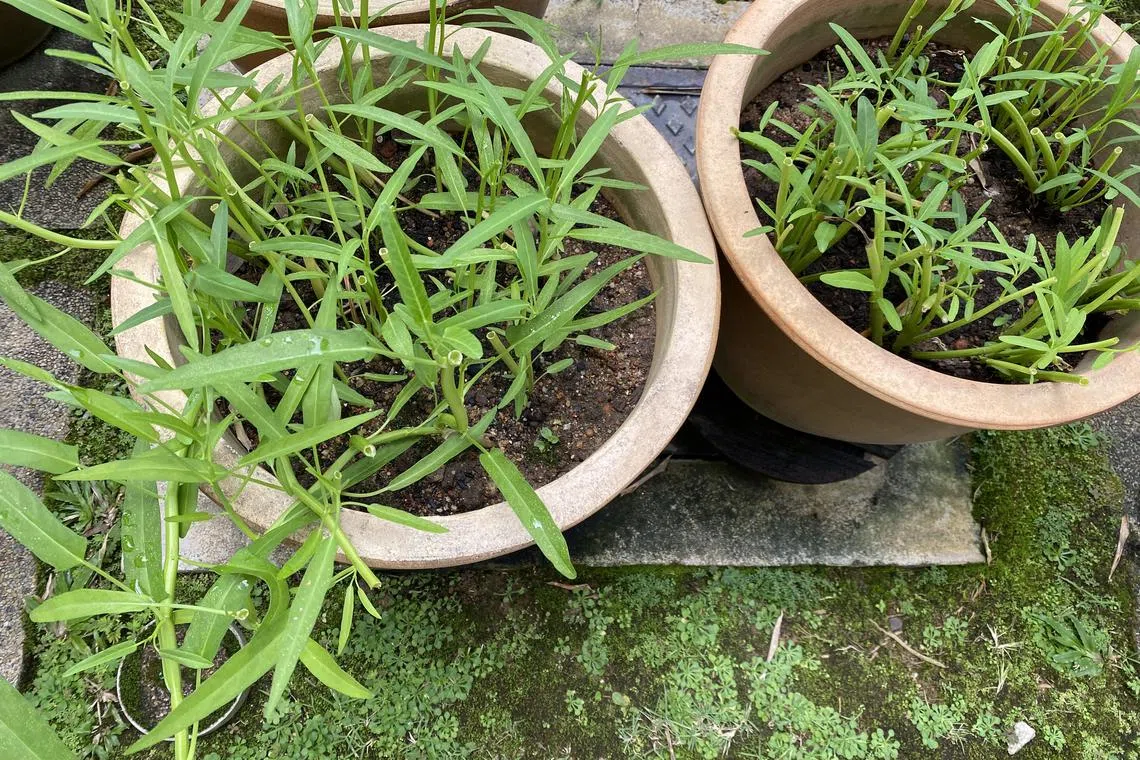
Tiny yellow spots may be an indicator of pests.
PHOTO: ONG KIM CHUAN
I bought kangkung from the supermarket, took stem cuttings and planted these in pots. They are growing well, but I see small yellow specks on the tops of the leaves. The undersides are unaffected and there are no holes or bumps on the leaves. What are these specks? Is the vegetable still edible?
Ong Kim Chuan
Flip the affected leaves of your kangkung (Ipomoea aquatica) and check for pests. Tiny yellow spots on the leaves may indicate the presence of spider mites, which suck sap from plant tissues and appear as moving red specks.
Spider mites can be difficult to control and often appear when plants experience water stress. Avoid letting your plants dry out or experience wet feet for long periods. Such stressors weaken plants and make them prone to pest infestation.
First, wash the pests off your plants using a jet of water. You may need to apply pesticides like summer oil, which are available at local nurseries, to suffocate the pests. Thorough and repeated applications may be required.
Observe the withholding period – that is, the time period that needs to elapse after spraying your plants before they can be harvested for consumption.
Plant could be turmeric
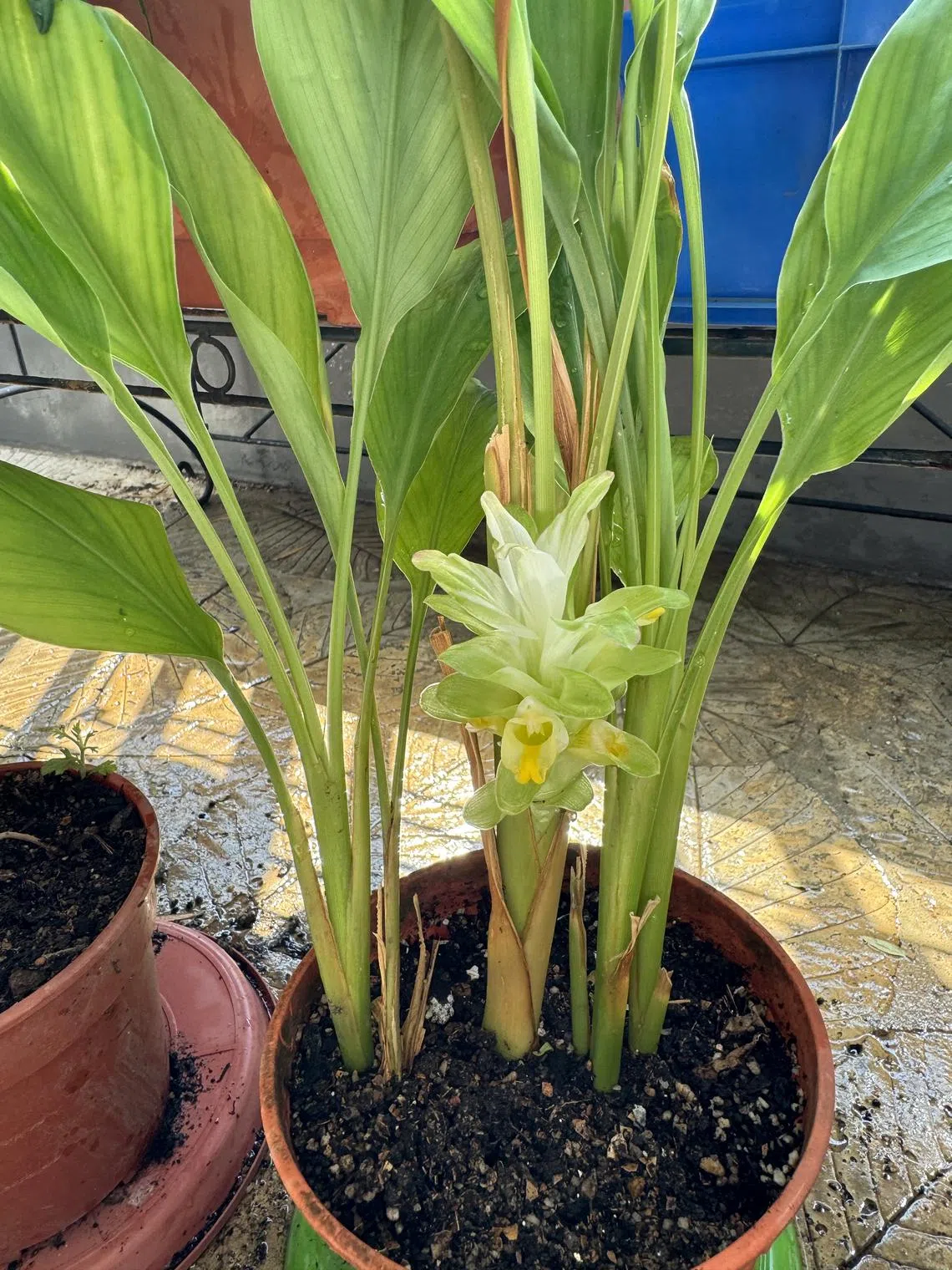
There is no need to remove the inflorescence from this plant.
PHOTO: LICIA YEO
What should I do with this ginger plant in bloom? I am told that some herbs – like basil, sawtooth and coriander – should have their flowers snipped so the leaves can grow.
Licia Yeo
Did you grow this plant from rhizomes bought from the market? From the picture, it looks like the turmeric plant (Curcuma longa). The decision to remove the flowers will depend on the species grown and the rationale for doing so.
For this ginger species, there is no need to remove the inflorescence as its presence will not impact subsequent growth. You should enjoy the flower while it lasts.
Pandan can be propagated via suckers
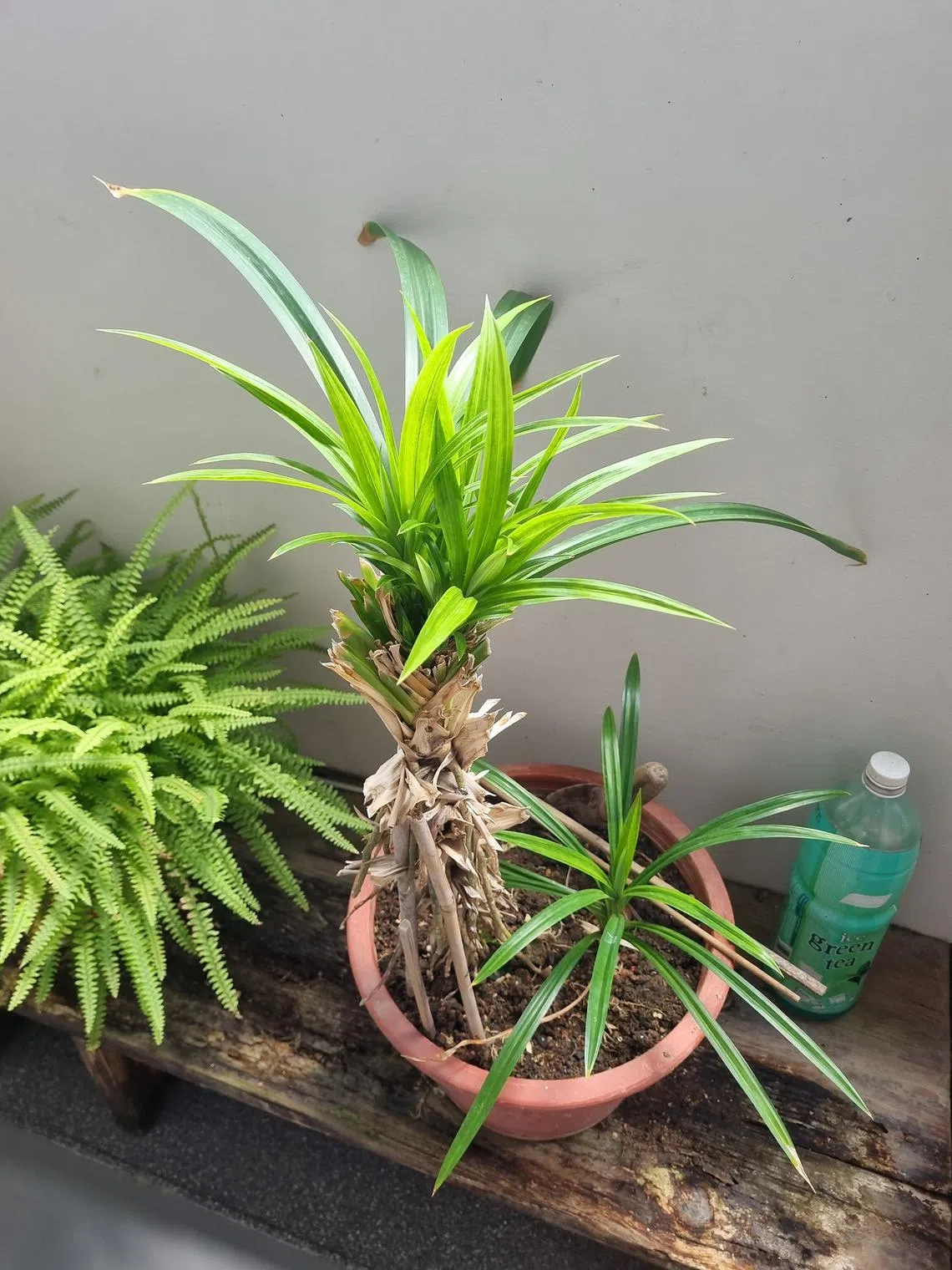
It is best to propagate pandan using suckers that are small and have some aerial roots.
PHOTO: GOH CHAI PENG
My pandan plant has many shoots growing in the middle of its stem. How should I repot these? Can I cut anywhere along the stem when repotting?
Goh Chai Peng
You can propagate your pandan plant (Pandanus amaryllifolius) via the suckers along the stem. It is best to take the ones that are small and have some aerial roots. Larger suckers without roots will have a bigger leaf surface area, which can lead to higher moisture loss, and take longer to produce roots.
When rooting suckers, locate them in a bright and cool spot. Keep the growing media moist and cover them with a clear plastic bag with holes for proper ventilation and the reduction of heat build-up.
Answers by Dr Wilson Wong, an NParks-certified practising horticulturist and parks manager. He is the founder of Green Culture Singapore and an adjunct assistant professor (Food Science & Technology) at the National University of Singapore.
Have a gardening query? E-mail it with clear, high-resolution pictures of at least 1MB, if any, and your full name to . We reserve the right to edit and reject questions.
Join a gardening talk by Dr Wilson Wong, How To Not Kill Your Plants, as part of Singapore Garden Festival 2024 on Aug 5 from 5 to 6pm. Go to
sgf.nparks.gov.sg
for details and buy tickets atstr.sg/iJtM2

